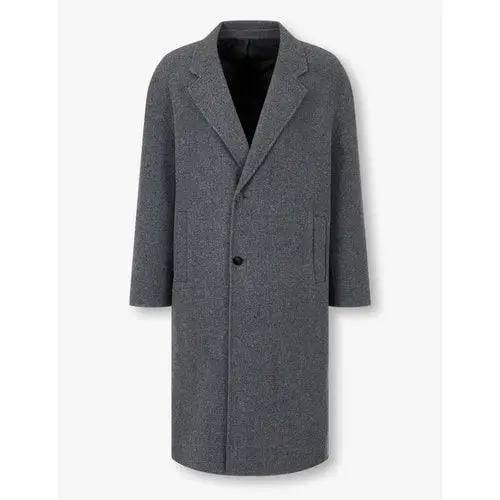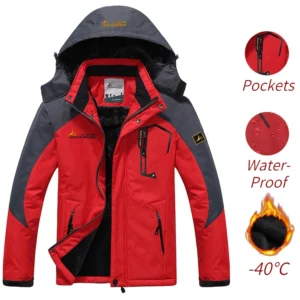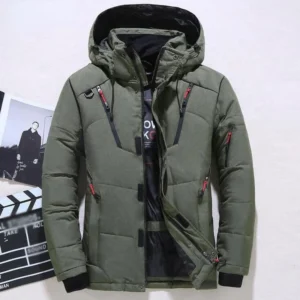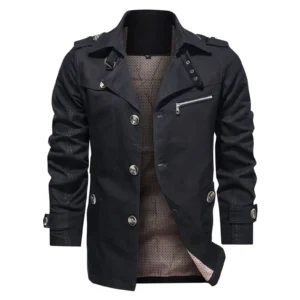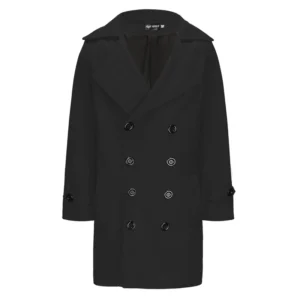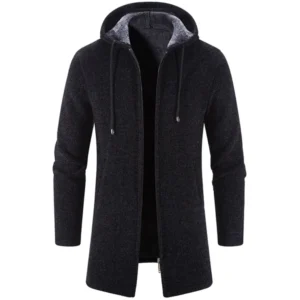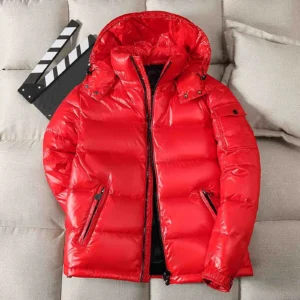Understanding Winter Coat Warmth Ratings: Breaking Down the Basics
When temperatures drop, finding the right winter coat becomes essential for comfort and even safety. But with so many options available and various warmth rating systems to decipher, how do you know which coat will actually keep you warm enough?
Winter coat warmth ratings are far from standardized across the industry. Different brands use different scales, measurements, and terminology to describe how warm their coats will keep you. Some use specific temperature ranges (like -20°F to -40°F), while others simply categorize their coats as “warm,” “warmer,” or “warmest.”
What makes this even more complicated is that warmth is highly subjective. Two people wearing identical coats in the same conditions might have completely different experiences. Research suggests that individual factors like metabolism can cause perceived temperature differences of up to 15°F between people! Your body composition, circulation, and even your personal cold tolerance all play significant roles in how warm a coat will feel to you.
In this comprehensive guide, we’ll break down:
– The key metrics used to measure coat warmth (fill power, fill weight, Clo value)
– The science behind insulation and heat retention
– Critical factors beyond the numbers that affect warmth
– How to choose the perfect winter coat for your specific needs
Understanding these elements will empower you to look beyond marketing claims and select a coat that will truly keep you comfortable in your specific winter conditions.
Throughout the year, the right men’s winter coats can make all the difference between dreading the cold and embracing the season. Let’s start by understanding how insulation actually works to keep you warm.
The Science of Insulation: How Winter Coats Keep You Warm
At its core, a winter coat’s primary function is not actually to generate heat but to trap the heat your body naturally produces. Understanding this fundamental principle helps explain why certain coat features and materials perform better than others.
Your body constantly produces heat through metabolic processes. In cold weather, this heat can quickly escape through three main mechanisms:
- Conduction: Direct transfer of heat when your body touches cold surfaces
- Convection: Heat loss through air movement (wind) carrying away warm air
- Radiation: Heat energy emitted directly from your warm body into the colder environment
An effective winter coat works by creating a barrier against all three types of heat loss. The primary way it does this is by trapping air. Still air is actually an excellent insulator because it’s poor at conducting heat. The more tiny air pockets a material can trap, the better insulation it provides.
This is why materials like down work so well—they create thousands of tiny air pockets that slow heat transfer. The loft (puffiness) of insulation directly relates to its ability to trap air and provide warmth.
However, there’s a constant balance between insulation and breathability. If a coat doesn’t allow any moisture vapor from your body to escape, you’ll end up sweating, which can eventually make you colder as the moisture conducts heat away from your body. The most effective winter coats manage this balance based on their intended use.
The proper perfect coat length for height also plays an important role in insulation, as it affects how much of your body is protected from the elements. Now that we understand the basic principles, let’s examine how warmth is actually measured.
Key Warmth Metrics: What the Numbers Actually Mean
When shopping for winter coats, you’ll encounter various numerical ratings and technical terms that manufacturers use to communicate warmth. Understanding these metrics will help you compare coats more effectively and find one that meets your needs.
These numbers aren’t just marketing—they represent actual measurable properties that affect how warm a coat will keep you. However, no single metric tells the complete story, which is why it’s important to understand how they work together.
Most metrics fall into one of three categories:
1. Insulation quality measurements (how efficient the insulation is)
2. Insulation quantity measurements (how much insulation is used)
3. Overall thermal resistance ratings (how the complete garment performs)
The testing methods behind these numbers typically involve controlled laboratory environments where thermal manikins measure heat loss through the garment. While useful for comparison, remember that real-world performance often varies based on conditions and individual factors.
For those seeking exceptional protection from the elements, men’s heavy winter coats often feature the highest ratings across multiple warmth metrics. Let’s break down each key metric to understand what it actually means for your comfort.
Fill Power Explained: Quality of Insulation
Fill power is a measurement specifically used for down insulation (from ducks or geese), and it indicates the quality and loft of the down. Technically, it measures how many cubic inches one ounce of down will occupy when allowed to reach its maximum loft under standard laboratory conditions.
The higher the fill power number, the better the down’s ability to trap air and provide insulation relative to its weight. Fill power typically ranges from about 500 to 900+, with higher numbers indicating premium quality down:
- 500-550 fill power: Basic down quality, decent warmth
- 550-650 fill power: Good quality, standard in many winter coats
- 650-750 fill power: Very good quality, excellent warmth-to-weight ratio
- 750-900+ fill power: Premium quality, exceptional loft and insulation efficiency
Higher fill power down creates more loft with less weight, meaning you can have a lighter coat that’s just as warm as a heavier one with lower-quality down. For example, a coat with 800 fill power down might be 15-20% lighter than a similarly warm coat with 600 fill power.
This weight difference explains why high fill power coats command premium prices. The highest fill powers (850+) typically come from mature geese from cold regions, where the birds naturally develop more lofty down clusters.
For quality insulation that balances warmth with weight, men’s down coats with higher fill power ratings offer excellent performance in cold conditions. However, fill power is only part of the equation—the amount of down used is equally important.
Fill Weight Demystified: Quantity of Insulation
While fill power measures quality, fill weight tells you the actual quantity of insulation in the coat. It’s typically measured in ounces or grams, and it’s a critical factor that many shoppers overlook.
A coat could have the highest quality 900 fill power down, but if it contains only a small amount, it won’t be very warm. Conversely, a coat with moderate 600 fill power down but a generous fill weight can be extremely warm.
For example:
– A lightweight down jacket might contain 3-4 ounces of down
– A midweight winter coat might have 5-7 ounces
– A serious cold-weather parka might include 8-14+ ounces
Interestingly, fill weight information is often harder to find than fill power. While brands proudly advertise high fill power numbers, the fill weight may be buried in product specifications or omitted entirely. When comparing coats, try to find both metrics for a true comparison.
Some premium winter coats might contain 5 ounces of 800 fill power down, while more affordable options might use 8 ounces of 550 fill power down. Both could provide similar warmth, but the higher fill power option will typically be lighter and more compressible.
The Warmth Equation: How Fill Power and Fill Weight Work Together
To understand a down coat’s true warmth potential, you need to consider both fill power and fill weight together. They have a multiplicative relationship that determines the coat’s overall insulation value.
A simple way to compare the total insulating capability of two down garments is:
Fill Power × Fill Weight = Total Insulation Value
Using this formula, you can compare different combinations:
– Coat A: 800 fill power × 4 oz = 3,200 insulation value
– Coat B: 600 fill power × 6 oz = 3,600 insulation value
In this example, Coat B would likely be warmer despite having lower quality down because it contains more total insulation. However, Coat B would also be heavier and bulkier.
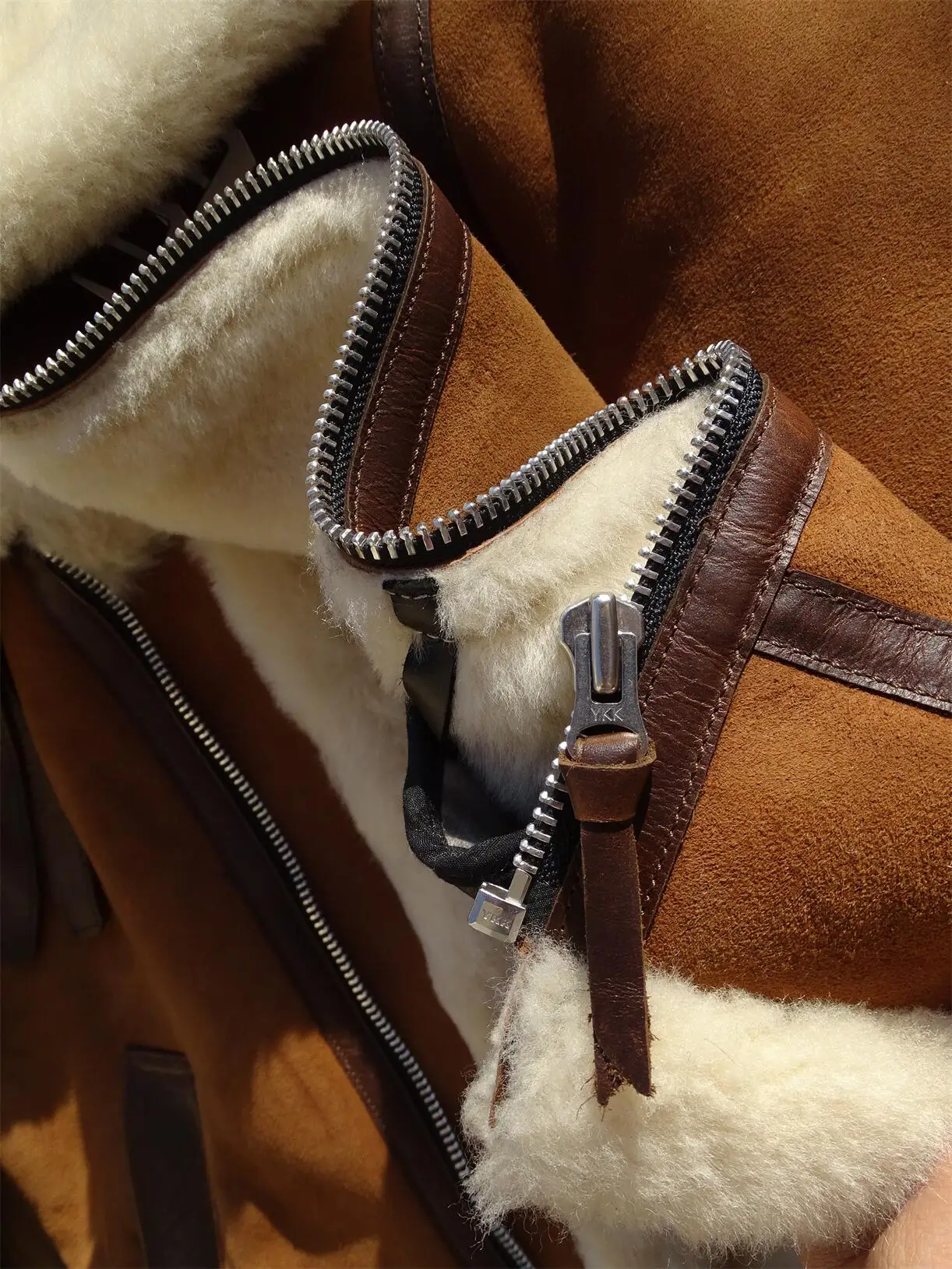
This relationship explains why you can’t judge a coat’s warmth by fill power alone. The trade-offs between higher fill power and higher fill weight involve considerations of weight, bulk, and cost. Higher fill power means less weight and bulk for the same warmth, but at a higher price.
When selecting a winter coat, the perfect winter coat length guide can help you determine how much coverage you need based on the temperatures you’ll face. Now, let’s look at a more scientific measurement of insulation.
Clo Value: The Scientific Measure of Thermal Insulation
The Clo value is a scientific measurement of a garment’s thermal insulation. One Clo represents the insulation required to keep a resting person comfortable in a normally ventilated room at 70°F (21°C) with humidity less than 50%. It’s essentially a measure of how well a garment prevents heat loss.
Typical Clo values for winter garments:
– Light indoor clothing: 0.5-0.8 Clo
– Light jacket or sweater: 0.8-1.2 Clo
– Standard winter coat: 1.5-2.5 Clo
– Heavy winter parka: 3.0-4.0+ Clo
Clo values are determined through sophisticated laboratory testing using thermal manikins that measure heat loss through the garment. While not commonly found in consumer marketing materials, Clo values provide the most objective comparison of overall insulation performance.
The limitation of Clo measurements is that they’re typically taken in controlled environments without accounting for wind, precipitation, or activity levels that affect real-world performance. They also measure the entire garment system rather than just the insulation quality.
Brand Temperature Ratings: Understanding Proprietary Systems
Many brands develop their own temperature rating systems to help consumers choose appropriate coats for specific conditions. These systems vary widely in their approach and specificity:
Some brands provide specific temperature ranges:
– “Comfortable down to -20°F (-29°C)”
– “Designed for 15°F to 30°F (-9°C to -1°C)”
Others use comparative categories:
– “Mild” / “Moderate” / “Severe” / “Extreme”
– “Warmth Level 1-5”
These ratings are typically developed through a combination of technical testing and real-world user feedback. While helpful as general guidelines, they should be taken with some caution for several reasons:
- They often assume an “average” person with standard activity levels
- They may not account for wind or precipitation
- Testing methodologies vary significantly between brands
When interpreting these ratings, consider your personal cold tolerance and adjust accordingly. If you typically run cold, look for coats rated for temperatures 10-15°F lower than you expect to encounter.
For personalized style and warmth, understanding the differences between short vs long coats can help you select the right coat length for your climate and body type.
Beyond the Numbers: Critical Factors Affecting Coat Warmth
While numerical ratings provide valuable information, many other factors significantly impact how warm a coat actually feels. Sometimes these non-numerical factors matter even more than the technical specifications.
Two coats with identical insulation ratings can perform very differently in real-world conditions due to differences in:
– Insulation type and distribution
– Shell fabric and weather resistance
– Construction quality and design features
– Fit and coverage
When evaluating winter coats, consider this visual checklist of factors beyond the numbers:
– ☑ Insulation material appropriate for your conditions
– ☑ Weather-resistant outer shell
– ☑ Wind-blocking features
– ☑ Proper fit with room for layers
– ☑ Critical seams sealed or protected
– ☑ Adequate coverage of cold-sensitive areas
Let’s examine each of these factors in detail to understand how they contribute to real-world warmth.
Insulation Types: Choosing the Right Material for Your Needs
Different insulation materials have distinct performance characteristics that make them better suited for specific conditions and activities. Understanding these differences helps you select the right coat for your needs.
| Insulation Type | Warmth-to-Weight | Wet Performance | Durability | Compressibility | Cost |
|---|---|---|---|---|---|
| Natural Down | Excellent | Poor (unless treated) | Good (with proper care) | Excellent | High |
| Hydrophobic Down | Excellent | Good | Good | Excellent | Very High |
| Synthetic (PrimaLoft) | Good | Very Good | Good | Good | Moderate |
| Synthetic (Thinsulate) | Very Good | Good | Very Good | Fair | Moderate |
| Wool | Good | Very Good | Excellent | Poor | Moderate to High |
| Fleece | Fair | Good | Good | Good | Low to Moderate |
Natural Down (duck or goose) offers the best warmth-to-weight ratio and compressibility but loses most of its insulating properties when wet. It’s ideal for dry, cold conditions but requires careful maintenance.
Hydrophobic Down is treated to repel water, addressing down’s biggest weakness. It maintains more insulating ability when damp but still doesn’t match synthetic insulation in truly wet conditions.
Synthetic Insulations like PrimaLoft, Thinsulate, and Polartec come in various forms. They insulate even when wet, dry faster than down, and are typically less expensive, but they’re heavier and bulkier for the same warmth level.
Wool and Other Natural Fibers provide good insulation even when damp and naturally regulate temperature better than synthetics. Wool is heavier than down and synthetic alternatives but offers excellent durability and classic styling.
For traditional elegance with natural insulation properties, men’s wool coats provide reliable warmth with timeless style. For luxury insulation performance, consider the exceptional warmth-to-weight ratio of men’s shearling coats which combine plush wool with durable leather.
Shell Fabrics and Treatments: Your Shield Against the Elements
The outer shell fabric of a winter coat plays a critical role in maintaining warmth by blocking wind and managing moisture. Even the most effective insulation will underperform if the shell fabric allows wind to penetrate or becomes saturated.
Water Resistance Levels:
– Water-resistant: Treated to repel light precipitation for short periods
– Water-repellent: Higher level of resistance, often using DWR (Durable Water Repellent) treatment
– Waterproof: Prevents water penetration even under pressure, typically using membranes like GORE-TEX
Wind Protection:
– Windproof: Blocks virtually all airflow through the fabric
– Wind-resistant: Reduces airflow but allows some breathability
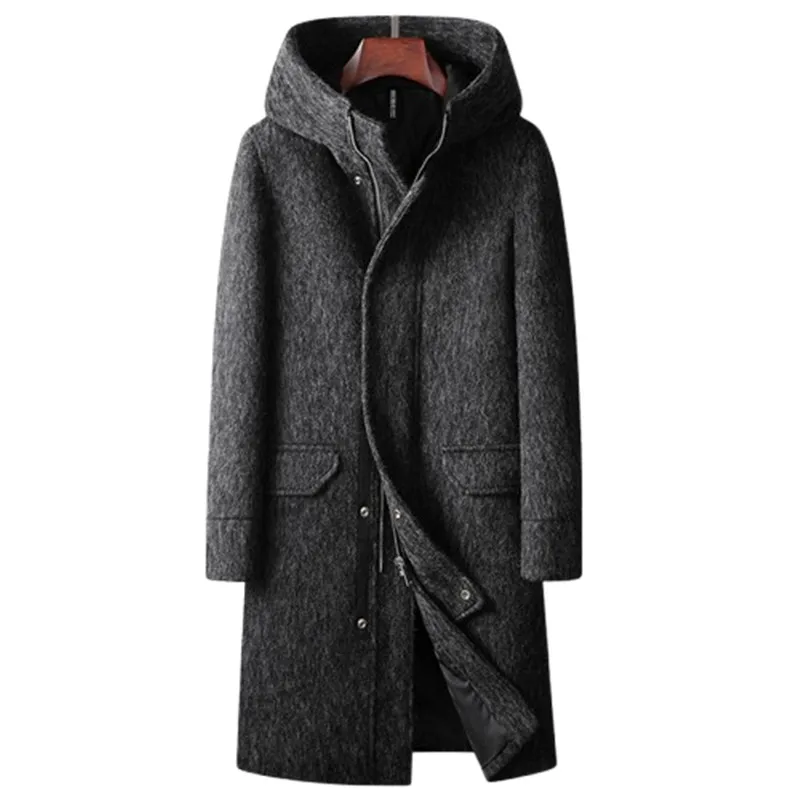
DWR treatments are common on winter coat shells. They cause water to bead up and roll off rather than soaking in. However, these treatments wear off over time and need reapplication to maintain effectiveness.
Waterproof/breathable membranes like GORE-TEX, eVent, and proprietary brand technologies offer the highest level of weather protection while still allowing some moisture vapor to escape. These technologies prevent water droplets from entering while allowing smaller water vapor molecules from perspiration to exit.
Fabric durability is often measured in “denier” – higher numbers indicate thicker, more durable fabrics. While more durable, higher denier fabrics can add weight to a coat.
Finding the right coat length can significantly affect your protection from the elements. The men’s coat length guide can help you determine the appropriate coverage based on your height and the weather conditions you’ll face.
Construction and Design Features: The Details That Make a Difference
The way a coat is constructed can dramatically affect its warmth, regardless of the quality of insulation used. Key construction elements to consider include:
Baffle Construction (for down coats):
– Sewn-through: Insulation is secured by stitching that goes through both layers of fabric, creating potential cold spots at seams
– Box-wall: Creates three-dimensional chambers that allow down to fully loft, eliminating cold spots but adding weight and cost
Draft-Prevention Features:
– Storm flaps over zippers prevent wind from penetrating
– Draft tubes inside zippers add another layer of protection
– Adjustable, elasticized cuffs seal out cold air at the wrists
– Drawcord hems prevent warm air from escaping at the bottom
– High collars and insulated hoods protect the neck and head
Specialized Cold-Weather Features:
– Face masks or integrated balaclavas protect exposed skin
– Snow skirts prevent cold air and snow from entering from below
– Articulated sleeves improve mobility without creating gaps
– Two-way zippers allow venting during activity without removing the coat
A coat’s length also significantly affects warmth. Longer coats provide more coverage and better protection against cold and wind, particularly important for the lower back and thighs, which contain large blood vessels close to the skin.
For maximum protection in extremely cold conditions, men’s hooded winter coats with well-designed hoods provide crucial head and face protection that significantly increases overall warmth.
The Personal Equation: Why Warmth Is Subjective
One of the most challenging aspects of choosing a winter coat is accounting for individual differences in how people experience cold. What keeps one person perfectly comfortable might leave another shivering—or sweating.
Metabolic Differences: Your basal metabolic rate—how quickly your body burns calories and generates heat—varies based on:
– Body size and composition
– Age (metabolism typically slows with age)
– Gender (women often feel colder than men due to physiological differences)
– Fitness level and muscle mass
– Certain medical conditions
Activity Level: The amount of heat your body generates changes dramatically based on what you’re doing:
– Standing still in 30°F (-1°C) weather might require a heavy parka
– Snowshoeing in the same temperature might be comfortable in just a light insulated jacket
– After high-intensity activity, your body can quickly cool when you stop moving
Acclimatization: People who regularly experience cold temperatures often develop increased tolerance through:
– Improved circulation to extremities
– Mental adaptation to cold sensations
– Physiological changes that improve heat conservation
Layering Strategy: Your choice of base and mid layers greatly affects how warm your outer layer needs to be. A moisture-wicking base layer and insulating mid-layer work together with your coat to create a complete system.
When selecting a winter coat, remember that you’re not just buying for current conditions but for your specific body and activities. Consider how coat fit affects both style and warmth. For many men, understanding what length coat makes you taller can help you find a coat that’s both flattering and functionally warm.
Environmental Factors: How Weather Conditions Impact Coat Performance
The ambient temperature is just one factor that determines how warm a coat needs to be. Other environmental conditions can dramatically affect both the actual and perceived temperature.
Wind’s Dramatic Effect: Wind chill can make the effective temperature much lower than the thermometer reading. For example:
– 20°F (-7°C) with no wind feels like 20°F
– 20°F with 20 mph (32 km/h) wind feels like 4°F (-16°C)
– 20°F with 30 mph (48 km/h) wind feels like -2°F (-19°C)
This means a coat that’s perfectly adequate in still conditions might leave you freezing in windy environments.
| Condition | Impact on Insulation Performance |
|---|---|
| Wind | Dramatically increases heat loss, can penetrate non-windproof materials |
| Rain/Sleet | Compresses insulation, can soak through non-waterproof materials |
| Snow | Less immediately damaging than rain but can eventually soak in |
| Humidity | Can reduce the perceived temperature and affect breathability |
| Sun/Shade | Direct sun can increase perceived warmth by 10-15°F |
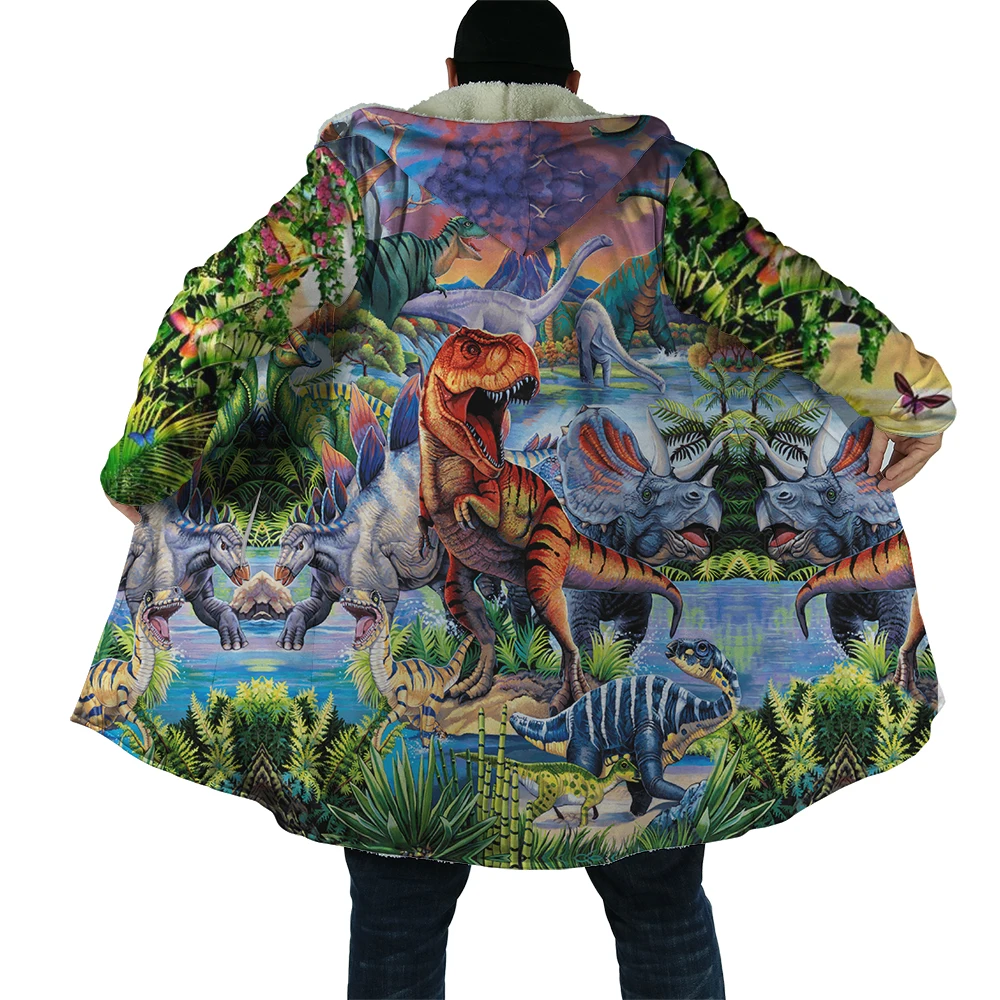
Different insulation types respond differently to these conditions:
– Down insulation loses most of its insulating ability when wet
– Synthetic insulation retains 50-70% of its insulating properties when wet
– Wool provides good insulation even when damp
For versatile performance in various weather conditions, wool overcoats offer winter warmth and style that handles humidity and light precipitation better than many synthetic options.
Practical Guide: How to Choose the Perfect Winter Coat
With all this information in mind, here’s a step-by-step approach to selecting the ideal winter coat for your needs:
Assess your typical winter environment:
– Temperature range you’ll most commonly face
– Typical precipitation (dry cold, wet snow, rain/sleet)
– Wind conditions
– Urban vs. wilderness settingsConsider your personal factors:
– Do you typically run hot or cold?
– What activities will you be doing in the coat?
– How much time will you spend outdoors vs. indoors?
– Do you need room for heavy layers underneath?Prioritize key features based on your needs:
– For extreme cold: Focus on high fill power, generous fill weight, and windproof shell
– For wet conditions: Prioritize waterproof shell and synthetic or treated down insulation
– For active use: Emphasize breathability and freedom of movement
– For urban commuting: Balance warmth with weight and styleCompare insulation specifications:
– For down coats: Check both fill power AND fill weight
– For synthetic coats: Look for weight (g/m²) of insulation or overall coat weight
– Consider temperature ratings as general guidelinesEvaluate construction quality:
– Examine seam construction (sealed seams for waterproof coats)
– Check for draft-prevention features
– Ensure zippers are high-quality with storm flapsConsider your budget priorities:
– Invest more in coats for extreme conditions or daily wear
– Consider durability for long-term value
– Determine which features you can compromise on and which are non-negotiable
For those seeking premium cold-weather options with exceptional insulation, men’s leather shearling coats offer outstanding warmth with distinctive style and durability that makes them a worthwhile investment.
Climate-Specific Winter Coat Recommendations
Different climate types call for different coat specifications. Here are recommendations based on typical temperature ranges:
Mild Winter Climates (40°F/4°C and above)
– Insulation Needs: Light to moderate (synthetic or 550-650 fill power down, 2-4 oz)
– Key Features: Water resistance more important than extreme insulation; versatile layering options
– Recommended Styles: Wool coats, lighter down jackets, insulated rain jackets
– Considerations: Emphasis on versatility and style; ability to vent during temperature fluctuations
Moderate Winter Climates (20°F to 40°F/-7°C to 4°C)
– Insulation Needs: Moderate (600-700 fill power down, 4-6 oz, or equivalent synthetic)
– Key Features: Good wind resistance; water resistance for snow/rain
– Recommended Styles: Down jackets, heavier wool coats, insulated technical jackets
– Considerations: Balance between warmth and not overheating when moving between indoors and outdoors
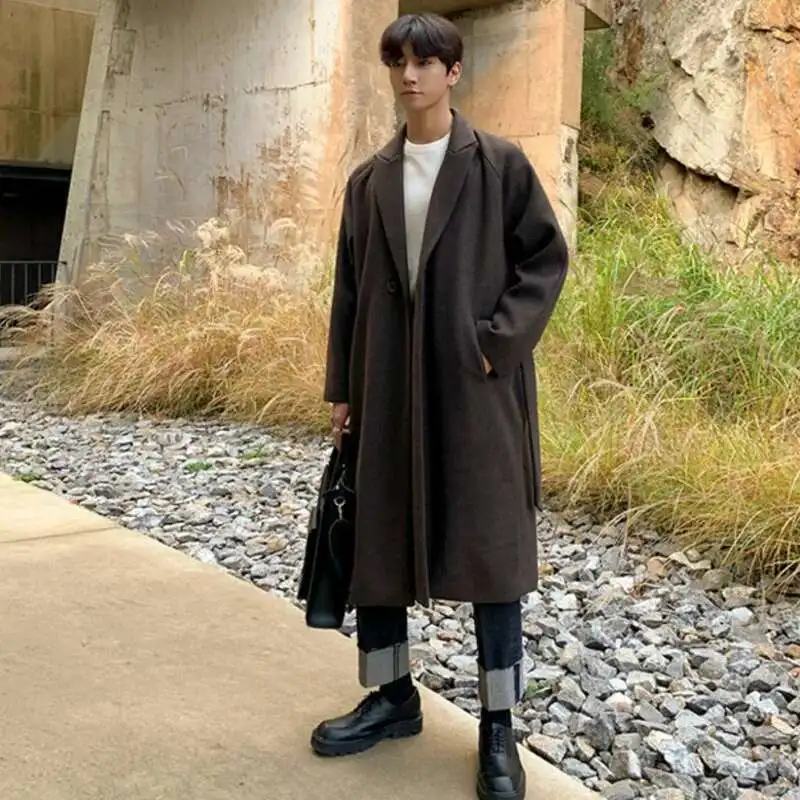
Cold Winter Climates (0°F to 20°F/-18°C to -7°C)
– Insulation Needs: Heavy (650-800 fill power down, 6-9 oz, or equivalent synthetic)
– Key Features: Excellent wind protection; good coverage (longer length); insulated hood
– Recommended Styles: Down parkas, heavy technical jackets, fur-lined coats
– Considerations: Features to prevent drafts become critical; protection for extremities
Extreme Cold Climates (below 0°F/-18°C)
– Insulation Needs: Very heavy (700-900 fill power down, 9+ oz, or equivalent synthetic)
– Key Features: Windproof shell; maximum coverage; expedition-grade features
– Recommended Styles: Expedition parkas, Arctic-rated coats
– Considerations: Multiple specialized features like face protection, double storm flaps, reinforced areas
When selecting a coat for your climate, consider coat length based on your height. The best coat length for short men guide provides specific recommendations to ensure proportional coverage without overwhelming your frame.
Activity-Based Winter Coat Selection
The activities you’ll be doing should heavily influence your coat selection. Different activities create different needs:
Daily Urban Use (Commuting, Shopping, etc.)
– Priorities: Convenient features, easy on/off, balance of warmth and weight
– Recommended Features: Two-way front zipper, accessible pockets, less technical appearance
– Considerations: Will you be primarily walking outdoors or just going between car and buildings?
Low-Intensity Outdoor Activities (Walking, Sightseeing)
– Priorities: Reliable warmth without overheating, weather protection
– Recommended Features: Adjustable ventilation, moisture management, comfortable range of motion
– Considerations: Longer coverage to keep warm during extended periods of low activity
Moderate-Intensity Activities (Hiking, Snowshoeing)
– Priorities: Moisture management, temperature regulation, freedom of movement
– Recommended Features: Highly breathable insulation, ventilation options, articulated fit
– Considerations: Often better to choose slightly less insulation to prevent overheating
High-Intensity Activities (Cross-Country Skiing, Winter Running)
– Priorities: Extreme moisture management, minimal bulk, maximum breathability
– Recommended Features: Lightweight insulation only in key areas, maximum ventilation options
– Considerations: These often require specialized athletic outerwear rather than traditional winter coats
Specialized Cold-Weather Activities (Ice Fishing, Mountaineering)
– Priorities: Extreme weather protection, specialized features for the activity
– Recommended Features: Activity-specific design elements, maximum insulation, reinforcements
– Considerations: Often requires technical gear designed specifically for these activities
For guidance on selecting a coat style that complements your activity needs, the men’s coat length style guide offers insights on how different lengths affect both functionality and appearance.
Mens Heavy Winter Coat, Mens Insulated Coat, Mens Parka Coat
Price range: $175.52 through $237.36 Select options This product has multiple variants. The options may be chosen on the product pageMens Big and Tall Winter Coats, Mens Down Coat, Mens Hooded Winter Coat, Mens Puffer Coat
Price range: $126.44 through $217.01 Select options This product has multiple variants. The options may be chosen on the product pageMens Big and Tall Winter Coats, Mens Hooded Winter Coat
Price range: $80.32 through $106.68 Select options This product has multiple variants. The options may be chosen on the product pageMens Double Breasted Pea Coat, Mens Wool Blend Coat, Mens Wool Pea Coat
Price range: $136.84 through $157.36 Select options This product has multiple variants. The options may be chosen on the product pageMens Cashmere Overcoat, Mens Hooded Winter Coat, Mens Wool Blend Coat
Price range: $128.72 through $139.68 Select options This product has multiple variants. The options may be chosen on the product pageMens Hooded Winter Coat, Mens Insulated Coat, Mens Puffer Coat, Mens Quilted Coat
Price range: $139.88 through $177.72 Select options This product has multiple variants. The options may be chosen on the product page
Winter Coat Layering Strategies: Maximizing Your Warmth
Even the warmest winter coat performs better as part of a complete layering system. Understanding how to layer effectively can significantly enhance your comfort in cold conditions.
The classic three-layer system provides maximum versatility and thermal efficiency:
Base Layer: Thin, moisture-wicking fabric that sits directly against your skin
– Purpose: Moves perspiration away from your body to keep you dry
– Materials: Merino wool, synthetic performance fabrics (avoid cotton)Mid Layer: Insulating layer that traps warm air
– Purpose: Creates thermal barrier; adds/removes easily to regulate temperature
– Materials: Fleece, down vests/sweaters, wool sweaters, synthetic insulated jacketsOuter Layer: Your winter coat or shell
– Purpose: Blocks wind and precipitation while allowing moisture to escape
– Materials: Varies based on conditions (down, synthetic insulation, waterproof/breathable fabrics)
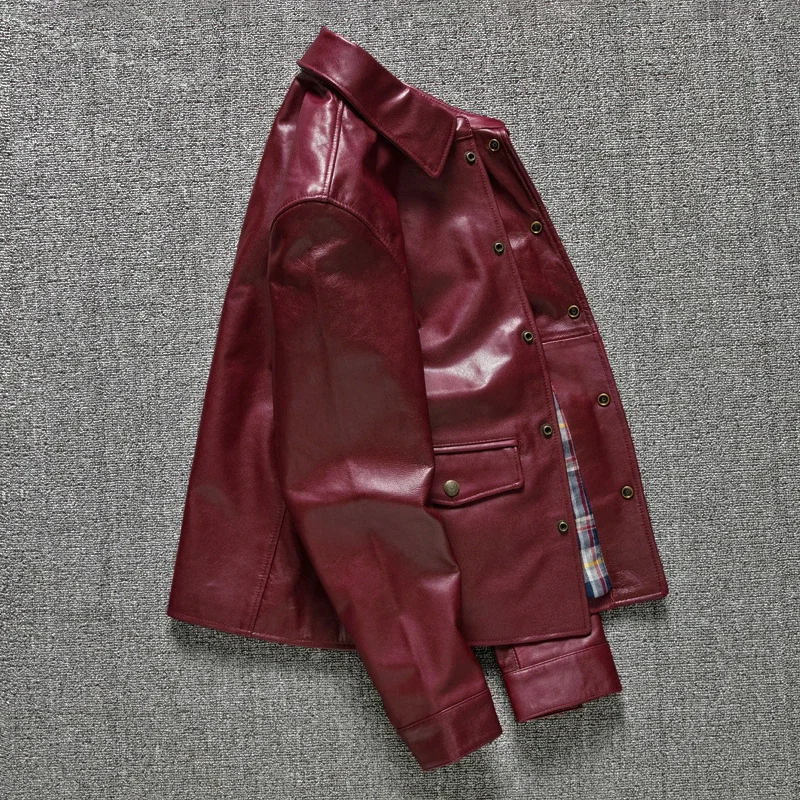
Effective layering tips:
– Add or remove mid-layers rather than changing your outer coat as temperatures fluctuate
– Ensure each layer fits properly—too tight restricts movement and compresses insulation; too loose allows cold air circulation
– Leave slight room for air between layers (this air gets warmed by your body and provides insulation)
– Adjust layers based on activity level—remove layers before you start sweating, add layers before you get cold
For extremely cold conditions, consider:
– Multiple mid-layers of different weights
– Both lightweight and heavyweight base layers
– A windproof/waterproof shell over your insulated coat in severe conditions
The layering approach provides much greater versatility than relying solely on your coat for warmth. For optimal layering, proper coat dimensions are essential. The definitive guide to full coat length helps you select the right proportions for effective layering without bulk.
Winter Coat Care and Maintenance: Preserving Warmth Performance
Proper care of your winter coat not only extends its life but also maintains its insulating performance season after season. Different insulation types require specific care approaches.
For Down Insulation:
– Clean only when necessary (typically once per season or when visibly soiled)
– Use down-specific detergent that doesn’t strip natural oils
– Dry thoroughly on low heat with clean tennis balls to restore loft
– Never compress down for long-term storage
– Store hanging or loosely packed in a breathable bag
For Synthetic Insulation:
– Follow manufacturer’s care instructions closely
– Most can be machine washed on gentle cycle
– Use technical fabric detergent free of fabric softeners
– Tumble dry on low heat or air dry
– Can be stored with moderate compression
For Wool Coats:
– Brush regularly to remove surface dirt
– Spot clean when possible instead of full cleaning
– Dry clean only when necessary (once per season)
– Use cedar blocks or lavender sachets for storage to deter moths
– Store on shaped hangers to maintain structure
Shell Fabric Maintenance:
– Reapply DWR treatments when water stops beading (typically 1-2 times per season)
– Clean technical fabrics with appropriate cleaner to maintain breathability
– Check and repair small tears immediately before they expand
– Keep zippers clean and occasionally apply zipper lubricant
Signs your coat’s insulation may be deteriorating:
– Visible clumping or shifting of insulation
– Cold spots where there was previously even warmth
– Significantly reduced loft in down products
– Increased weight (may indicate moisture retention in the insulation)
Finding a coat that fits well is essential for maintaining its performance. The perfect coat length for every body type guide can help ensure your coat maintains proper coverage as you move.
Common Winter Coat Warmth Myths: Separating Fact from Fiction
Several persistent myths about winter coat warmth can lead to poor purchasing decisions. Let’s correct some of the most common misconceptions:
MYTH: Heavier always means warmer
FACT: Weight doesn’t necessarily correlate with warmth. Modern technical insulations can provide exceptional warmth with minimal weight. The quality of insulation, construction, and design features often matter more than sheer weight.
MYTH: Down is useless when wet
FACT: While traditional down loses much of its insulating ability when saturated, modern hydrophobic treatments significantly improve wet-weather performance. That said, synthetic insulation still generally performs better in consistently wet conditions.
MYTH: Synthetic insulation can’t be as warm as down
FACT: High-quality synthetic insulations can approach the warmth of down, though they typically require more weight and volume to do so. For extremely cold, dry conditions, down usually maintains an advantage in warmth-to-weight ratio.
MYTH: A single warmth rating can tell you everything you need to know
FACT: Due to the subjective nature of warmth perception and varying environmental factors, no single rating system can perfectly predict comfort. Consider ratings as guidelines rather than absolute indicators.
MYTH: Wind-resistant and windproof mean the same thing
FACT: Wind-resistant fabrics reduce airflow but still allow some penetration, while windproof fabrics block virtually all wind. For severe conditions, true windproof construction makes a significant difference in warmth.
MYTH: You need to size up for winter coats
FACT: While you need some room for layering, excessive space can reduce efficiency by allowing too much air circulation. Modern technical coats are already designed with layering in mind.
For those seeking exceptional warmth without bulk, modern men’s puffer coats offer advanced insulation technology in surprisingly lightweight packages.
What About Winter Coats for Special Situations?
Certain scenarios present unique challenges for winter coat selection. Here are answers to common questions about special situations:
Are winter coats for formal occasions less warm?
Not necessarily. While traditional wool overcoats prioritize appearance, many premium options feature excellent insulation through high-quality wool, interior wind barriers, and even hidden technical features. Consider a tailored wool coat with thinsulate lining or a formal-looking down coat for the best of both worlds.
How should I choose a coat for travel between different climates?
Look for versatile options with removable components. A 3-in-1 system with a waterproof shell and removable insulated liner offers flexibility. Alternatively, pack a compressible down jacket that can be worn alone or layered under a lighter coat as conditions change.
What about coats for high-visibility needs like cycling or road work?
Safety should come first. Look for coats with reflective elements or bright colors that maintain proper insulation. Many technical brands now offer high-visibility versions of their insulated products, with reflective strips or panels that don’t compromise on warmth.
Can a single coat work for very different temperature ranges?
With proper layering, yes. Choose a coat with moderate insulation and excellent wind/water protection, then adjust your base and mid layers as temperatures change. Features like adjustable vents, removable hoods, and two-way zippers enhance versatility across temperature ranges.
Winter Coat Warmth Glossary: Key Terms to Know
Understanding the technical terminology used in winter coat descriptions will help you make more informed purchasing decisions:
Baffle Construction: The internal fabric walls in down products that create compartments to hold insulation in place and allow it to fully loft.
Denier: A measurement of fabric thickness. Higher numbers indicate thicker, more durable (but often heavier) fabrics.
Down Cluster: The fluffy undercoating beneath the feathers of ducks and geese that provides superior insulation.
DWR (Durable Water Repellent): A treatment applied to fabrics that causes water to bead up rather than soak in.
Face Fabric: The outer material of a coat that provides durability and weather resistance.
Fill Power: Measurement of down quality, indicating how many cubic inches one ounce of down will fill under standard conditions.
Fill Weight: The actual amount of insulation (down or synthetic) in a garment, typically measured in ounces or grams.
Hydrophobic Down: Down treated with a water-resistant coating to improve performance in damp conditions.
Loft: The thickness or puffiness of insulation when fully expanded, directly related to warmth.
Microfleece: A thin, lightweight fleece material often used for linings.
Ripstop: A reinforced fabric woven with a crosshatch pattern to prevent tears from spreading.
Scuba Hood: A close-fitting, structured hood design that provides excellent face protection.
Thermal Efficiency: How effectively a material retains heat relative to its weight and thickness.
Making an Informed Winter Coat Decision: Final Thoughts
Selecting the right winter coat is ultimately about matching your specific needs with the right features and specifications. By understanding the science of insulation, the meaning behind the numbers, and the critical factors that affect real-world performance, you can make a choice that will keep you comfortable in your specific winter conditions.
Remember these key points when making your final decision:
- No single metric tells the complete story of a coat’s warmth
- Your personal factors significantly influence how warm a coat will feel to you
- The conditions you’ll face matter as much as the temperature alone
- Quality construction and thoughtful design features can make a substantial difference
- A coat should be part of a complete cold-weather clothing system
Before finalizing your purchase:
– Try the coat on with the layers you’ll typically wear underneath
– Check for freedom of movement and proper coverage when moving
– Verify that all key features (zippers, adjustments, etc.) work smoothly
– Research user reviews from people in similar climates and activities
At Metro Cloak, we understand that a quality winter coat is an investment in your comfort and well-being. By focusing on the factors that matter most for your specific needs, you can find a coat that will provide reliable warmth and protection for many winters to come.

